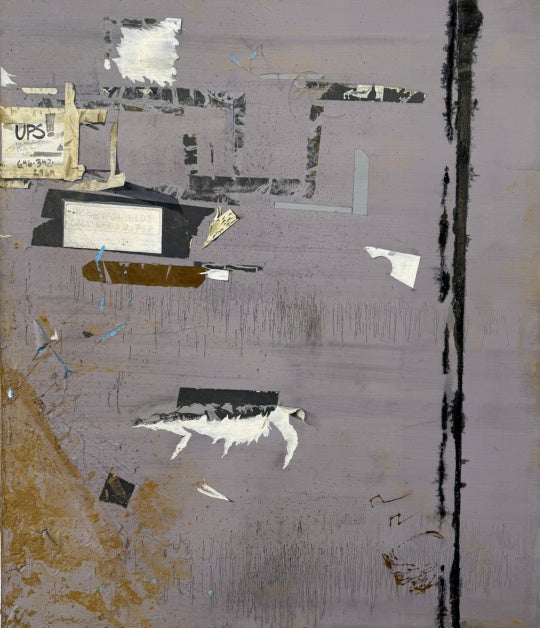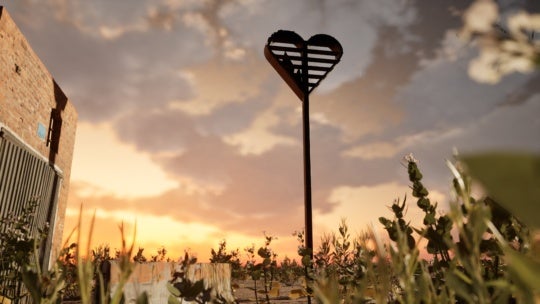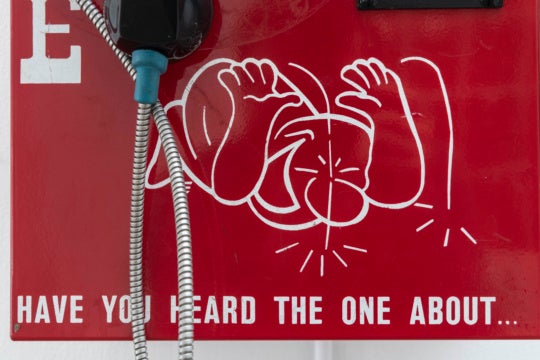
What do our portable electronic devices and audio listening gadgets say about us as a culture? Delving into our recent past like some pop culture anthropologist, New York-based photographer Lyle Owerko focuses on an iconic relic from the ’70s and ’80s to address that topic in his exhibition “Boomboxes and Eagle Hunters,” currently on view at Jackson Fine Art. The other body of work, “Eagle Hunters,” is a study of the art of falconry in contemporary Mongolia. Despite their diverse subjects, the two share a connection as very specific subcultures that have rarely been given such detailed consideration as camera subjects.

There is certainly a sense of fun and playfulness in the boombox images. After all, Owerko is a self-confessed boombox fan and collector (some of his own collectibles are featured in the show), but his affection for them isn’t merely nostalgia based. He sees these once ubiquitous accoutrements of the urbanite as an important utilitarian medium for self-expression as well as a way to share, unite or even confront people on the streets and in public through music. In a published interview, Owerko said that the boombox was “a wonderful symbol of a generation wanting to be seen and heard … but also a rallying cry to gather and create!” The strange irony is that what was once a means of expressing your personality and attitude by blasting personal playlists to the world has become internalized and cerebral in today’s world of mini-iPods and ear buds.
Every boombox portrait on view has a personality of its own; some are in pristine condition but several offer up evidence of their once vibrant street days: nicks, scratches, dirt, discolored surfaces and worn-down knobs and buttons. Owerko wanted to avoid having the boomboxes perceived as glorified product endorsement shots so he experimented with a medium-format digital camera to achieve the desired lighting effect, one that amplified the grunge aspect.

Boombox 2, for example, would probably have a fascinating backstory to tell if it could talk, but you still get a strong sense of the owner’s personal connection to his Crown portable with the stencil-covered speakers and stripped-down, punk rock aesthetic. Heavy usage has worn the silver finish off the unit, revealing the charcoal color beneath. Providing an amusing contrast to this is Boombox 9, the Dynasty W-Deck, which is a theatrical showstopper with its busy color-blocked design that makes the speakers look like glowing hypnotic eyes. The signage on this baby is equally memorable with wording like “personal disco component” and “7-Band Equalizer” branded onto the exterior casing.
The other compelling aspect of the show is the way it subtly contemplates the technology and design of the boombox without directly addressing our current musical device standards. Did we really go from these bass-booming behemoths to sleek, tiny pocket pods in under 15 years? When they first hit the market in the mid-’70s, boomboxes were like oversized mutations of the traditional transistor radio, but by the mid-’80s, new models were approaching the size of suitcases. Boombox 12, the Lloyd’s model with the 22CM speakers and the super jumbo double cassette, is a typical study in excess and, by today’s standards, presents the viewer with an overwhelming range of listening options and controls. The countless knobs, buttons and switches were not just for show and, as Boombox 33 demonstrates, could be played like a genuine musical instrument in the right hands. This battered, faded memento has probably seen more action than a nightclub DJ’s turntable.
Along with the larger boxes came more intimidating designs that could and did assault listeners with sonic blasts. Boombox 19, the model Sharp GF 6060, has an imposing militarylike presence (the speakers resemble the wheels of a cargo truck) and looks as formidable as a tank compared to some of its rivals in the field.

In contrast to Owerko’s affectionate and almost fetishistic appreciation of the boombox, “Eagle Hunters” takes you to a place far removed from 20th-century urban pop culture. These starkly beautiful portraits of the Kazakh people in the Altai Mountains of Mongolia with their eagles are too perfectly composed and stylized to be mistaken as the work of a field ethnographer, but Owerko’s curiosity and genuine respect for his subjects inform each image.
Eagle Hunter 1, with its fierce and noble profile of a hooded bird of prey, is a fitting homage to the Kazakhs’ 4,000-year-old tradition of training eagles for hunting. One of the most striking images, Eagle Hunter 8, depicts an eagle taking flight from its trainer against a backlit sky. The composition effectively unites animal, man and nature in a composition that captures the freedom of the Kazakhs’ rugged lifestyle.
Eagle Hunter 4, with its almost defiant posing of two hunters, one on motorcycle with his eagle perched on a backpack, the other standing, is a jarring reminder that this remote and desolate region is still touched by the contemporary world.
Like Owerko’s well-known study of the Samburu, one of Africa’s last great warrior tribes, “Eagle Hunters” continues the photographer’s interest in documenting and preserving a nomadic way of life that is in danger of vanishing in an ever-changing world. Owerko’s art continues to evolve in intriguing ways and has come a long way since he was first thrust into the national spotlight with his devastating image of the second plane hitting the World Trade Center on 9/11.
“Boomboxes and Eagle Hunters” is on view at Jackson Fine Art through September 3.
Jeff Stafford writes about art, film, music, gardening and other favorite topics for various digital publications.




